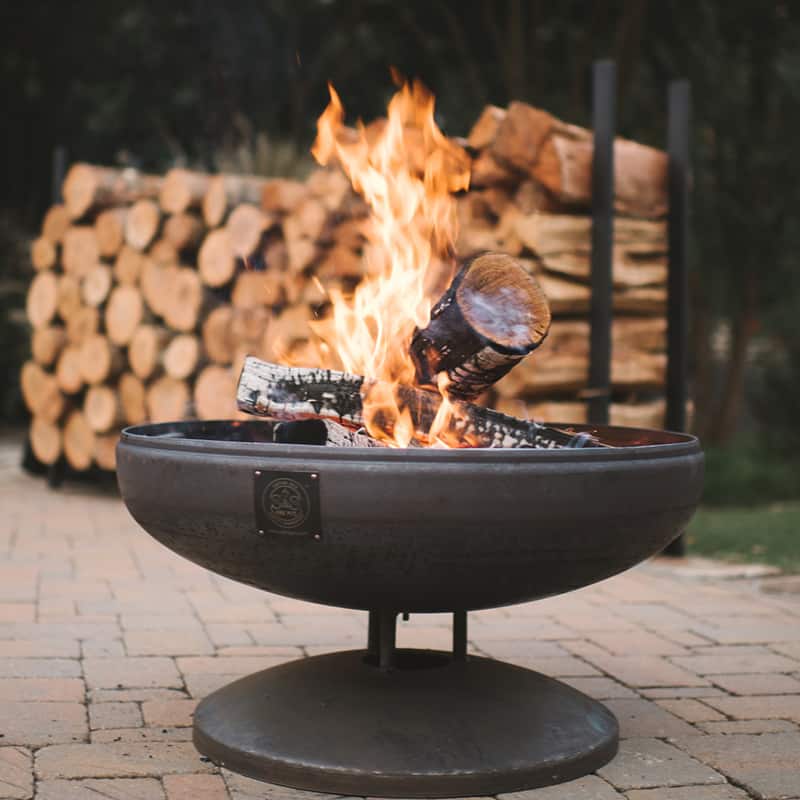With its flavorful and rich fat content, a pork loin is the perfect cut of meat to smoke. Not to be confused with a pork tenderloin, it's a wide and thick cut of pork that comes from the sides of the ribs. When smoked, the pork loin's fat will melt, essentially infusing the meat with delicious flavors while protecting it from drying out in the process. For the best flavor, though, you should follow these tips on how to smoke a pork loin like a pro.
Use a Wood Smoker
Don't assume that all smokers are the same. When smoking a pork tenderloin, you'll experience better results using a wood smoker rather than an electric smoker.
Wood smokers rely exclusively on wood to create heat, whereas electric smokers use a combination of both wood and electricity. Electric smokers don't actually create a fire. Rather, they feature an electrically powered heating element that warms the wood. The wood still heats up -- and it still releases smoke -- but it doesn't burn. Wood smokers, on the other hand, burn wood to produce higher cooking temperatures as well as more flavorful smoke. You can technically smoke a pork loin using either an electric or wood smoker. Of those two options, though, the latter offers an unparalleled level of performance. Wood smokers burn high-quality wood chunks to produce flavorful smoke. As the smoke rises, the pork loin will absorb it.

Prepare Your Smoker
Assuming you use a wood smoker, you should prepare it by filling it with high-quality wood chunks. Also known as smoking chunks, wood chunks are blocks of wood that come from hardwood trees. As they burn, they produce flavorful smoke that's used to cook meats and veggies.
What type of wood chunks should you use when smoking a pork loin? You can always conduct your own culinary experiments by testing different varieties of wood chunks. With that said, cherry and hickory are popular choices for pork loins. Cherry wood chunks offer a mildly sweet flavor that's reminiscent of fresh cherries, whereas hickory wood chunks offer a stronger and bolder flavor that naturally complements pork. The bottom line is that you can't go wrong using either cherry or hickory wood chunks to smoke a pork loin.
Regardless of which variety you choose, place the wood chunks in the bottom of your smoker's fuel compartment. You can then light the wood chunks -- either with or without the help of charcoal -- to start your smoker.
Aim for a Cooking Temperature of 220 to 230 Degrees
You should aim for a cooking temperature of about 220 to 230 degrees Fahrenheit when smoking a pork loin. Maintaining the correct temperature is essential when smoking any cut of meat, and a pork loin is no exception. If your smoker is too hot, your pork loin may burn and dry out. If your smoker is too cold, your pork loin may fail to reach a safe internal temperature. Therefore, you should wait until your smoker has reached a temperature of 220 to 230 degrees Fahrenheit before adding your pork loin to it.
Unlike electric smokers, wood smokers don't have automatic controls to adjust the temperature. There are still ways, however, to raise or lower the temperature of a wood smoker. To make your wood smoker hotter, open the damper vents. Most wood smokers have two damper vents: one on the top of the lid and another on the bottom of the main fuel compartment. Like with grilling, the damper vents are used to control airflow into and out of the smoker. Wood smokers burn wood, so they require oxygen to facilitate in the combustion process. If both the damper vents are completely closed, the fire won't receive fresh oxygen, which will cause to burn out. By opening both damper vents all the way, however, fresh oxygen can easily enter your wood smoker, allowing the wood to burn at a higher temperature.
Along with opening the damper vents, you can make your smoker hotter by adding more fuel to it. If it's not hot enough, toss some more charcoal or wood chunks into the fuel compartment. Charcoal, of course, burns hotter than wood chunks. Therefore, you really don't need to use much charcoal, if any, to achieve an appropriate cooking temperature in your smoker. Just add a small amount, check the temperature of your smoker, and gradually add more charcoal as needed.
Place Pork Loin Fatty-Side Up
When you're reading to begin smoking your pork loin, place it fatty-side up on your smoker's cooking grate. Pork loins, of course, have a fatty side and a lean side. For the best flavor, you should cook it fatty-side up.
If you place your pork loin lean-side up, the fat will simply drip onto and through your smoker's cooking grate. Aside from causing flare-ups, this will limit the flavor of your pork tenderloin. Fat is flavorful, but all this flavor is lost if you cook your pork loin lean-side up. Cooking it fatty-side up, the fat will drip down the sides of your pork loin, essentially covering it in flavorful juice. Some of the fat may still drip through the grate, but most will remain trapped on the sides of the pork loin. You'll experience a better flavor when cooking pork loin fatty-side up in your smoker. The fat will liquefy and infuse your pork loin with flavorful juice, all while keeping it moist in the process.

Aim for an Internal Temperature of 140 to 150 Degrees
Wait until your pork loin has reached an internal temperature of about 140 to 150 degrees Fahrenheit before removing it from your smoker. Unfortunately, it's nearly impossible to identify the internal temperature of a pork loin by looking at it. Granted, a pork loin will develop a darker color, as well as a firmer texture, as it cooks, but you can't rely solely on the appearance to determine whether it's finished. The only surefire way to know if your pork loin is finished is to check its internal temperature using a probe thermometer.
After smoking your pork loin for about 2 hours, insert a probe thermometer into the thickest section to check its internal temperature. Once your pork loin has reached an internal temperature of 40 to 150 degrees Fahrenheit, you can remove it from your smoker.
Apply Sauce After Your Pork Loin Has Cooked
If you're going to use sauce, apply it after your pork loin has finished cooking. What's wrong with applying sauce to a pork loin before cooking it? If you smother your pork loin in sauce before adding it to your smoker, the sauce may burn. Even at a cooking temperature of 220 to 230 degrees Fahrenheit, most sauces will burn. As the sauce burns, it will leave a not-so-pleasant char that negatively affects the flavor of your pork loin. To prevent your sauce from burning, wait until your pork loin has finished cooking to apply it.
Find the best quality wood chunks for smoking by visiting our online store today. Cutting Edge Firewood offers a variety of high-quality smoking chunks, including white oak, hickory, cherry, pecan and whiskey that you can use to smoke a delicious pork loin like a pro. We offer complimentary shipping for our smoking chunk products across the United States.


